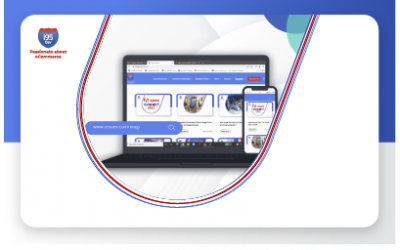As an online retailer, no USP seems more effective than customer experience, be it pricing, discounts, quality, returns, or policy. A mere 15% of the customers are happy with their online eCommerce purchase experiences, which calls for a serious discussion: Is the retail eCommerce industry losing track of customer experience management (CXM)?
If yes, it is an excellent opportunity for online eCommerce stores to win more customers and increase their sales.
This article will summarize the top eight customer experience management (CXM) trends to watch out for in 2023.
Find out what your B2C eCommerce business requires to enhance customer experience. Define your unique requirements and get started today. Download
At the end of the article, you will have a concrete understanding of how to improve your retail eCommerce business’ customer experience and create an evergreen source of revenue.
Let’s get started:
1. The rise of smart customer self-service solutions in retail eCommerce
Smart customer self-servicing is one of the most prominent trends in the retail eCommerce sector due to multiple reasons.
The average customer is far more techno-savvy than in the past. At the same time, an increasing number of people prefer to minimize in-person interactions, which may lead to social anxiety.
Also, it gives the customers complete control over how much they want to learn about your business/products/services while getting things done at their own pace and time.
Aim to integrate as many parts of your operations and digital infrastructure with self-servicing capabilities to facilitate purchase preferences like BOPIS (buy online pick up in-store) or automatically posting an unknown query to the forum instead of displaying a “sorry message.”

How does a modern integrated eCommerce solution help in improving customer experience?
2. Combining personalization + social proof for better eCommerce conversions
So far, personalization and social proof are viewed as two distinct, standalone strategies, but it’s about time online retailers change their outlook. While it is true that people consider social proof a credible source of truth, it is also understood that people generally trust people whom they can relate with. Thus, you must invest in personalizing the social proof content for your users to boost their confidence and conversions further.

3. Going an extra mile beyond every retail eCommerce touchpoint
As much as we believe that retail eCommerce stores are doing a great job at every customer touchpoint, it differs from what most customers feel. Customer behavior changes drastically from one touchpoint to another; thus, you must resonate with their expectations and go beyond them. An average customer goes through 6-8 touch points before conversion. Therefore, you must provide personalized support across each touchpoint that adheres to the platform-native user behavior.

4. Leveraging AR/VR for social selling, Livestream selling in tandem with your eCommerce store
AR/VR is no longer a futurist trend- it is a reality for 2023, and the retail eCommerce industry must embrace it. Ikea has been leveraging AR for almost half a decade, while brands like Nike have collaborated with Snapchat to create unique AR/VR filters for their products. Similarly, Livestream selling is also a must-have component for 2023 sales planning as it generated a 500-billion-dollar market in 2022 alone.

5. Retail eCommerce loyalty programs will ingrain social messaging
Again, customer loyalty programs and social messaging are two high-performing customer experience management strategies, but combining them can create an unmatched synergy. You may choose an issue that concerns most of your customers and target audience and create a campaign around it. Rewarding customers for activities like tree plantation and participation in community service as a part of loyalty programs can set you apart from companies that run business-specific programs. Also, donating a fixed amount to causes (like in the case of Ukraine) can be a great way to nurture customer loyalty by resonating with their causes.
6. Adopting customer data privacy supportive best practices

Privacy concerns have never been considered more severe than in current times, and being proactive at protecting your customer’s privacy will benefit you tremendously. Firstly, minimize user tracking beyond your website and refrain from using tools that collect privacy-invasive user data for analytical purposes. Also, mention pro-privacy policies and benefits on your website and marketing materials.
7. Value per interaction as an indicator of UI/UX performance
As discussed earlier, there are virtually zero differentiators other than experiences at any given price range for any product. Thus, delivering enticing interactions should be a key driver of your online retail store’s UI/UX. For example, Shopify registered a mind-boggling 94% increase in its page conversion rates after introducing AR features. Thus, positive interactions should be the indicators of good UI/UX performance instead of purely relying on aesthetics and functionalities.
8. Cross-platform customer support in retail eCommerce
While great cross-platform tracking tools are available at our disposal, a few eCommerce stores truly utilize them for purposes like customer support.  The cost to acquire a new customer is 5X the cost of retaining an old customer, and bad customer service is a deal breaker to most people. On the contrary, you can register your name in their good books by providing excellent customer support, and ensuring cross-platform consistency is a great way to enrich it. For instance, a customer who dialed your customer service number but dropped the call before it connected must be approached via chatbots. If required, support over call and emails must be extended as per their preference.
The cost to acquire a new customer is 5X the cost of retaining an old customer, and bad customer service is a deal breaker to most people. On the contrary, you can register your name in their good books by providing excellent customer support, and ensuring cross-platform consistency is a great way to enrich it. For instance, a customer who dialed your customer service number but dropped the call before it connected must be approached via chatbots. If required, support over call and emails must be extended as per their preference.
Conclusion
CXM is set to become a top priority for both customers and businesses as markets continue to saturate. Leveraging these trends will produce great results for adopters but doing so is easier said than done. Need expert guidance on business and technical fronts when implementing solutions related to customer experience management?
Take the first step towards eCommerce success by defining your specific requirements for an improved customer experience. Download
Recent Blogs
Enhancing Shipping Precision with Custom Shipping Groups in Adobe Commerce/ Magento
Enhancing Shipping Precision with Custom Shipping Groups in Adobe Commerce/ Magento Author Category Share Three things matter the most when it comes to eCommerce shipping: speed, accuracy,...
Managing Massive Product Catalogs: Why Synchronization is the Key to Efficiency
Managing Massive Product Catalogs: Why Synchronization is the Key to Efficiency Author Category Share The automotive aftermarket industry is vast and highly competitive, requiring businesses...
A Complete Guide to Seamlessly Integrating Adobe Commerce with NetSuite
A Complete Guide to Seamlessly Integrating Adobe Commerce with NetSuite Author Category Share Integrating Adobe Commerce (formerly Magento) with NetSuite ERP can transform the way businesses...




